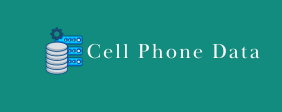Cold calling. The term itself can send shivers down a salesperson’s spine. It’s often associated with low success rates, frustrating rejections, and a general feeling of shooting in the dark. But what if you could transform cold calling into a more targeted, effective, and even enjoyable process? The key lies in leveraging data.
In today’s data-rich world, ignoring the insights available to you is like trying to navigate a dense fog without a map. By strategically using data, you can move beyond generic scripts and spray-and-pray tactics, and instead, craft personalized conversations that resonate with phone number data your prospects. This blog post will delve into how to harness the power of data to revolutionize your cold calling efforts and significantly improve your lead conversion rates.
Why Traditional Cold Calling Fails (and How Data Changes That)
Traditional cold calling often falls short because it lacks context. Salespeople call a list of numbers, hoping to stumble upon someone interested in their offering. This approach is inefficient and often leads to quick hang-ups. Prospects feel like they’re just another number, and the call lacks any genuine connection.
Data provides that crucial context. Instead of guessing, you can make informed decisions about who to call, when to call them, and what to talk about. This shifts the dynamic from an intrusive interruption tips to clean mobile number data lists in 2025 to a potentially valuable conversation.
The Power of Pre-Call Research
Before you even dial a number, data allows for extensive pre-call research. This isn’t about stalking; it’s about understanding. What industry are they in? What are their recent news or challenges? Who are their competitors? Are there any mutual connections? Tools like LinkedIn Sales Navigator, company websites, and industry news outlets become invaluable resources.
Furthermore, analyzing past interactions within your CRM can provide a wealth of information. Has this lead been contacted before? What were the outcomes? What content have they engaged with on your website or social media? This historical data provides a foundation for a more bermuda businesses directory relevant conversation.
Key Data Points to Supercharge Your Cold Calling
To truly optimize your cold calling, focus on gathering and analyzing specific data points.
Understanding Your Ideal Customer Profile (ICP)
Your ICP is a detailed description of the type of company or individual that would benefit most from your product or service. This goes beyond basic demographics. It includes firmographics (industry, company size, revenue), technographics (which technologies they use), and behavioral data (online activity, engagement with marketing materials).
By defining your ICP, you can filter out unqualified leads and focus your efforts on those most likely to convert. This dramatically improves efficiency and reduces wasted time.
Leveraging Lead Scoring and Segmentation
Lead scoring assigns a numerical value to leads based on their likelihood to convert. This is often based on explicit data (e.g., job title, company size) and implicit data (e.g., website visits, email opens). High-scoring leads should be prioritized for cold calling.
Segmentation takes this a step further, grouping leads based on shared characteristics. This allows you to tailor your messaging to specific segments, making your outreach far more relevant and impactful. For example, you might have different scripts for leads in the finance sector versus those in healthcare.
Behavioral Data: The Untapped Goldmine
Beyond explicit and demographic data, behavioral data offers a rich source of insights. This includes website visits, content downloads, email clicks, and even social media engagement. If a prospect has recently downloaded an e-book on a specific topic, you know they have an interest in that area. This gives you a natural starting point for your conversation.
Crafting Data-Driven Cold Calling Scripts
Once you have your data, the next step is to integrate it into your cold calling scripts. This doesn’t mean memorizing robotic lines; it means using the data to inform a more natural, personalized conversation.
Personalization is Key:
Start by referencing something specific you’ve learned about the prospect or their company. “I noticed your company recently expanded into X market,” or “I saw your post on LinkedIn about Y challenge.” This immediately demonstrates that you’ve done your homework and aren’t just reading from a generic list.
H4: Focus on Their Pain Points:
Based on your data, identify potential challenges or pain points the prospect might be facing. Frame your pitch around how your solution can address those specific issues. Instead of saying “We offer X product,” try “Many companies in your industry struggle with Y, and our solution helps address that by Z.”
Tools and Technologies for Data-Driven Cold Calling
Numerous tools can assist you in gathering, organizing, and leveraging data for cold calling:
CRM Systems (e.g., Salesforce, HubSpot): Essential for managing leads, tracking interactions, and storing valuable data.
LinkedIn Sales Navigator: Powerful for identifying ideal prospects, understanding their professional background, and finding relevant news.
Data Enrichment Tools (e.g., ZoomInfo, Clearbit): Provide detailed company and contact information.
Marketing Automation Platforms (e.g., Pardot, Marketo): Track behavioral data and lead engagement.
By integrating these tools and adopting a data-centric approach, you can transform your cold calling efforts from a dreaded task into a highly effective lead generation strategy. Embrace the power of data, and watch your cold calling success rates soar.
